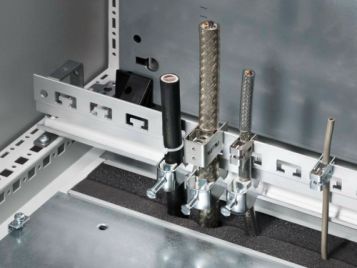
A distinction may be made between the following types of coupling influence:
- Conducted influence
- Field-bound influence – Field influence
- Radiation influence.
In field-bound interference (low frequency), very low-frequency currents cause a low-frequency magnetic field which may induce interference voltage or initiate interference via direct magnetic effects (magnetic memory in computers, monitors, sensitive electromagnetic test equipment such as EEG). Low-frequency electric fields of high intensity may be generated by low-frequency high voltages (high-voltage overhead cables), resulting in interference voltage (capacitive interference). Of practical significance are magnetic fields, the effects of which can be reduced via shielded cables. With shielding enclosures, the decisive material property is that of permeability, which is too low in the case of sheet steel; nickel iron, for example, is much better.
The electromagnetic waves radiating from electrical circuits in an open space can produce interference voltages, whereby such interference must then be considered in relation to the distance to its source (near field or distant field). In a near field, either the electrical component (E) or the magnetic component (H) of the electromagnetic field will predominate, depending on whether the source of the interference carries high voltages and low currents, or high currents and low voltages. In a distant field, generally speaking, E and H can no longer be considered separately. Interference can be reduced via shielded cables or shielding enclosures (Faraday cage!)
Looking to learn more about electromagnetic interference and how proper enclosure selection can help you minimize interference? Check out this other post about EMI.
Interested in learning more about our enclosures and their capabilities? Please check out our handbook on enclosure selections today.

